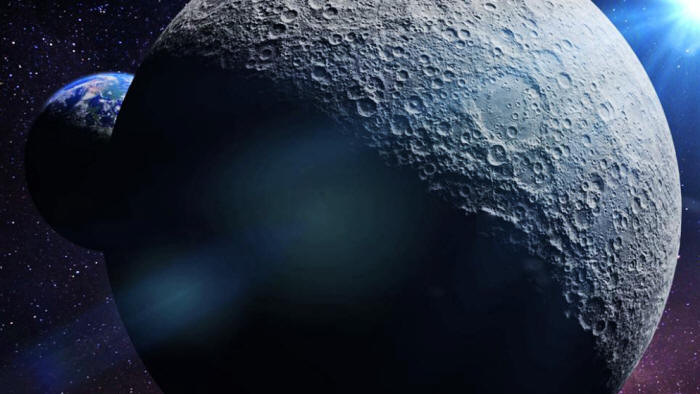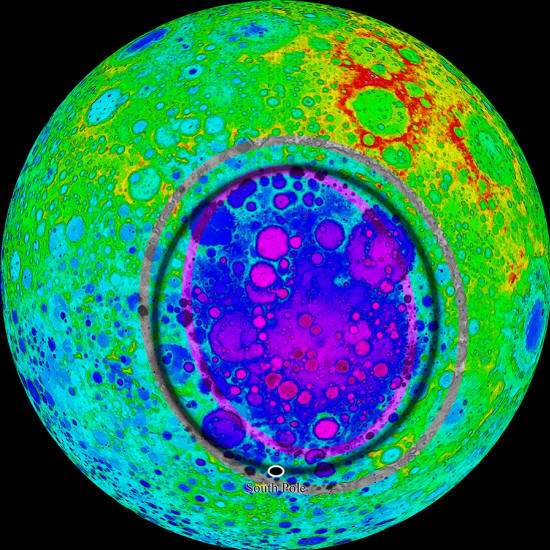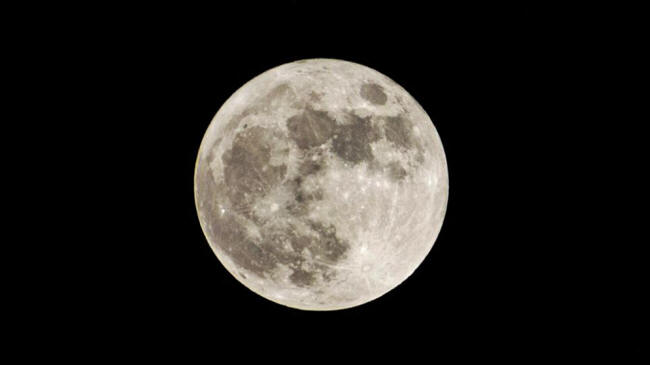|
is littered with many more craters than the nearside, which is visible from Earth.
(Image
credit: Shutterstock) is to blame for all the "holes" on the dark side of the Moon...
One side of the Moon is littered with far more craters than the other, and researchers finally know why:
More than 9,000 visible craters pockmark the Moon, thanks to barrage of impacts from meteors, asteroids and comets over billions of years, according to the International Astronomical Union.
However, these craters are not evenly distributed across the lunar surface.
The far side of the Moon, which people never see from Earth because the Moon is tidally locked (meaning that it takes the same amount of time for the Moon to rotate and orbit Earth), has a considerably higher concentration of craters than the visible nearside.
The nearside of the Moon has fewer pits because the surface is covered in lunar maria - vast stretches of solid lava that we can see with the naked eye on Earth as dark patches on the Moon.
These lava fields likely covered up the craters that would otherwise have marked the moon's nearside. The far side of the Moon has almost no lunar maria, which is why its craters are still visible.
Scientists have long suspected that lunar maria formed in the wake of a massive collision around 4.3 billion years ago.
Topographic map of the South Pole-Aitken basin based on Kaguya data. Red represents high elevation, purple represents low elevation. The purple and grey elliptical rings trace the inner and outer walls of the basin. (The black ring is an old artifact of the image.)
This collision created the South Pole-Aitken basin (SPA basin), a huge crater with a maximum width of around 1,600 miles (2,574 kilometers) and a maximum depth of 5.1 miles (8.2 km), which is the largest pit on the Moon and the second largest confirmed impact crater in the solar system.
However, until now researchers were unable to explain why only the nearside of the Moon has lava fields.
The new study (A South Pole-Aitken impact origin of the Lunar compositional Asymmetry) finds that the SPA impact created a unique phenomenon inside the moon's mantle, the layer of magma below the crust, that affected only the nearside.
The dark regions on the Moon that are visible from Earth are the solid lava flows which cover many of the nearside's craters. (Image credit: Shutterstock)
Researchers already knew the nearside's lava fields originated within the moon's mantle, because lunar samples brought back by the Apollo missions contained radioactive, heat-generating elements such as potassium, phosphorus and thorium that are all suspected to be found in abundance within the lunar mantle, according to the statement.
In the new study, computer simulations revealed that the SPA impact would have created a heat plume within the mantle that pushed the radioactive elements toward the crust.
The researchers repeated the simulation for a number of possible scenarios of the SPA impact, including direct hits and glancing blows, and found that regardless of how the asteroid hit, the mantle impacts would have only affected the nearside of the Moon.
Put another way,
The researchers are pleased to have solved what they described as,
The study (A South Pole-Aitken impact origin of the Lunar compositional Asymmetry) was published online April 8 (2022) in the journal Science Advances.
|




